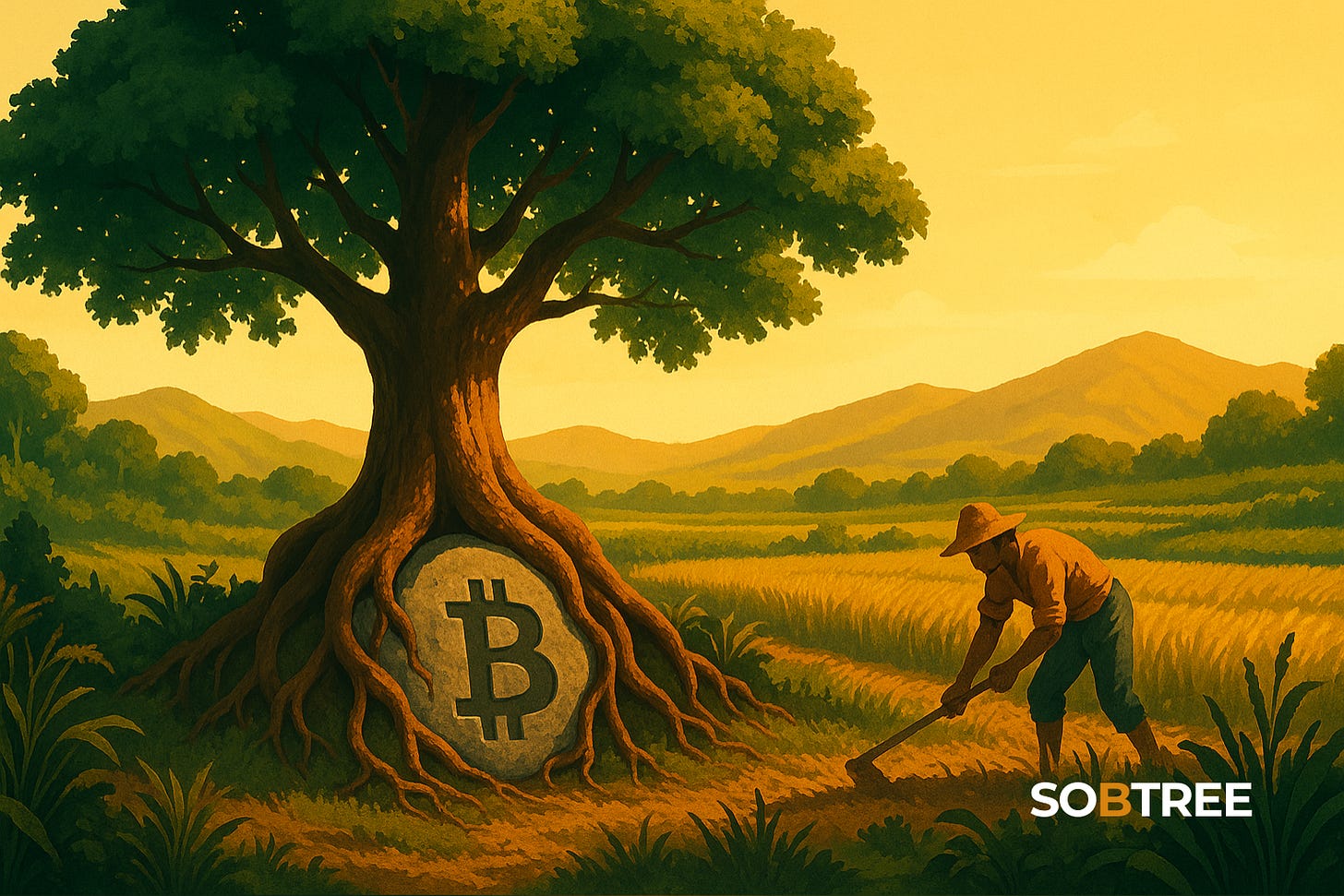Since the dawn of human cooperation for survival, money has served as a means to store and transfer energy. In the beginning, that energy was raw, physical, directly tied to muscle power, invested time, and sweat. The farmer who plowed the land with oxen was exchanging vital energy for food. The blacksmith, hours of heat and hammering for tools. Everything was directly proportional: more energy, more value. More work, more compensation.
With the Agricultural Revolution came specialization, and with it, the need for something that could represent that energy without having to exchange cows or sacks of grain each time. Thus, money was born. First as scarce goods, then as precious metals, and later as paper backed by gold. Always, in essence, it was a vehicle of transformed energy. The question was never what money is, but rather how much energy was behind that money.
And that defined everything. If accessing money required physical effort, transport, security, minting, and coordination, then it was valuable money, because the barriers to entry were high and demanded real energy. On the other hand, if access to money was easy, if it could be created without cost or friction, then that money did not act as a store of value, but as a distortion of exchange. The gold standard worked because it required extraction, refining, minting, and custody. Paper money made sense as long as conversion was real. But when the backing disappeared, money became a promise without cost to the issuer, and with a hidden cost to everyone else.
When money ceased to be backed by gold in 1971, something fundamental changed. The direct relationship between energy and value was broken. From that moment, money could be created without effort, without friction, without real cost. The result? A form of fake energy. A mirage in accounting that could be inflated, manipulated, and redistributed without the consent or labor of those who actually produced. Printing money became a sophisticated way of stealing human energy.
Today we live in a world where trillions of monetary units are generated without the need to produce anything, where the effort of millions is devalued at the pace central banks dictate. And paradoxically, that process of infinite creation is not free. It costs, and dearly. Not in terms of productive energy, but in emissions, price distortions, asset bubbles, dependence on cheap credit, and erosion of economic sovereignty.
However, we are on the verge of a historic transformation. For the first time, we have access to a form of money that is once again anchored to real energy: Bitcoin. Mining a bitcoin requires energy, planning, investment. It cannot be printed. It cannot be forged. And it cannot be manipulated by decree.
Bitcoin is digitalized energy, transformed and protected by thermodynamics and cryptography. It is the first form of money that replicates, on a global scale, the fundamental properties of sound money: scarcity, censorship resistance, impossibility of duplication, and radical transparency. But beyond that, it connects us with the future.
We live on a planet of abundant energy. From a physical standpoint, the world is not poor: it simply does not know how to channel its available energy. The sun sends 10,000 times more energy than we need every day. But we do not know how to store it well. We do not know how to distribute it well. We do not know how to monetize it well. The day we solve that triangle: storage, distribution, monetization. We will enter an era of unprecedented wealth.
And here another fundamental question arises: if human labor has historically been the main source of energy transformed into value, what happens when that labor begins to be replaced by artificial intelligence? If an AI can write, design, calculate, analyze, or even create complete products at an almost zero energy cost, how is value measured in that context? The answer is not yet clear, but it seems evident that value will no longer lie in effort, but in the ability to orchestrate systems, capital, and energy strategically. Those who know how to use AI as leverage rather than as a substitute will continue to accumulate productive energy. And those who can store that value in a form of money that does not degrade will hold a structural advantage.
In that scenario, Bitcoin becomes even more relevant. Because if production becomes cheaper and human capital dematerializes, we will need a way to anchor value that does not depend on promises, paper, or states. A way to preserve energy in a world where labor changes form but not substance.
And when that energy is abundantly available, we will need a monetary standard that cannot be manipulated by those who control the printing press. We will need a system that stores value objectively, neutrally, transparently. One that rewards real productivity, energy efficiency, tangible contribution. One like Bitcoin.
Meanwhile, the fiat system will continue to drain the energy of producers to inflate the balances of those closest to the printer. The game is clear. The alternative too.
So when someone asks me “what is money?”, I no longer talk about euros, or dollars, or banks. I talk to them about energy. I talk to them about open systems. I talk to them about how to protect their vital energy over decades. And that is where Bitcoin, with all its complexities, with all its challenges, is the first money of the 21st century that truly respects the law of conservation of energy.
And if we manage to live in a world of abundant, clean, and distributed energy, having a monetary system that matches it will be more than a necessity. It will be a silent revolution. One that has already begun, even if many still don’t see it.


